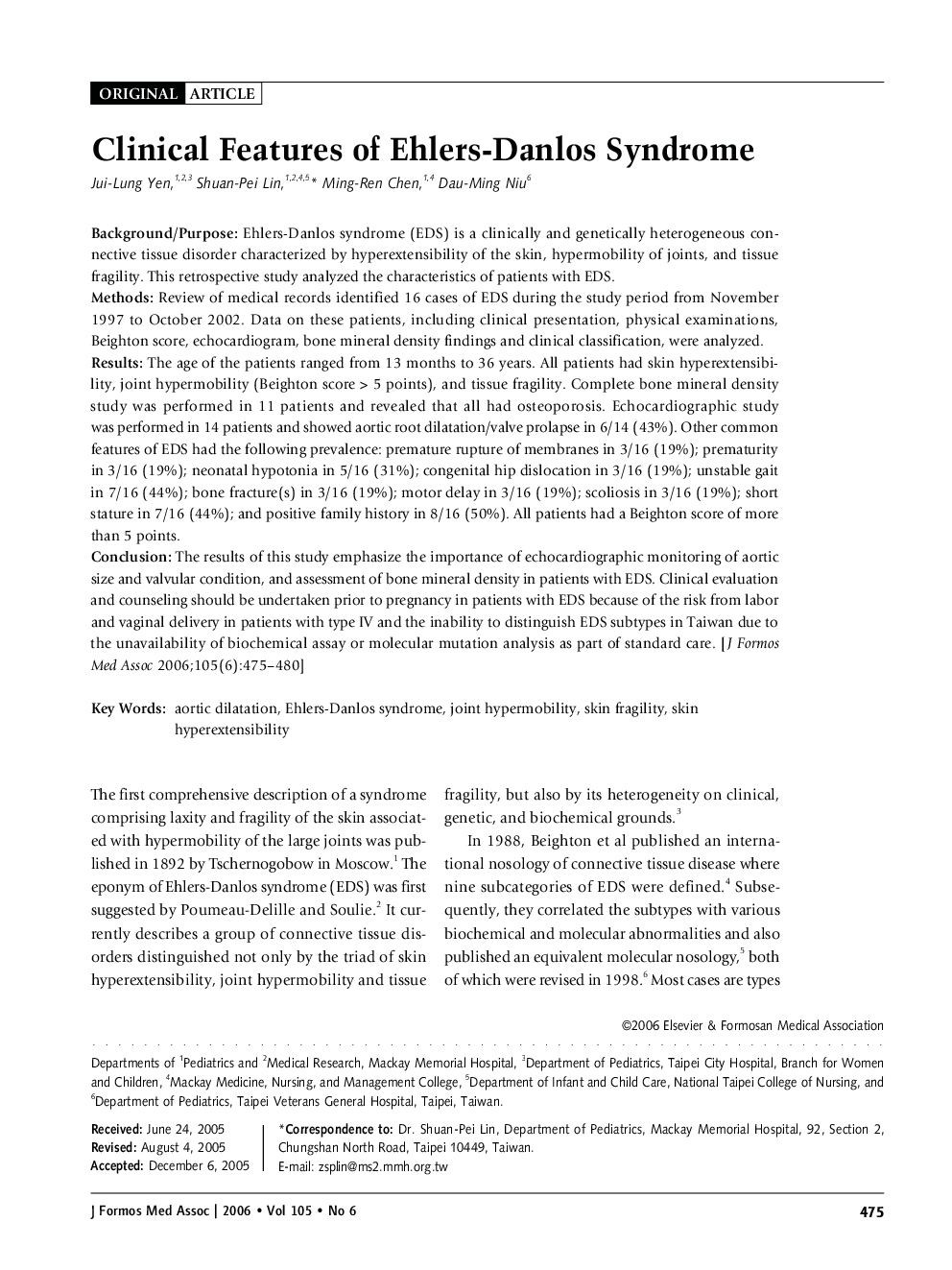| کد مقاله | کد نشریه | سال انتشار | مقاله انگلیسی | نسخه تمام متن |
|---|---|---|---|---|
| 3481543 | 1233512 | 2006 | 6 صفحه PDF | دانلود رایگان |

Background/PurposeEhlers-Danlos syndrome (EDS) is a clinically and genetically heterogeneous connective tissue disorder characterized by hyperextensibility of the skin, hypermobility of joints, and tissue fragility. This retrospective study analyzed the characteristics of patients with EDS.MethodsReview of medical records identified 16 cases of EDS during the study period from November 1997 to October 2002. Data on these patients, including clinical presentation, physical examinations, Beighton score, echocardiogram, bone mineral density findings and clinical classification, were analyzed.ResultsThe age of the patients ranged from 13 months to 36 years. All patients had skin hyperextensibility, joint hypermobility (Beighton score > 5 points), and tissue fragility. Complete bone mineral density study was performed in 11 patients and revealed that all had osteoporosis. Echocardiographic study was performed in 14 patients and showed aortic root dilatation/valve prolapse in 6/14 (43%). Other common features of EDS had the following prevalence: premature rupture of membranes in 3/16 (19%); prematurity in 3/16 (19%); neonatal hypotonia in 5/16 (31%); congenital hip dislocation in 3/16 (19%); unstable gait in 7/16 (44%); bone fracture(s) in 3/16 (19%); motor delay in 3/16 (19%); scoliosis in 3/16 (19%); short stature in 7/16 (44%); and positive family history in 8/16 (50%). All patients had a Beighton score of more than 5 points.ConclusionThe results of this study emphasize the importance of echocardiographic monitoring of aortic size and valvular condition, and assessment of bone mineral density in patients with EDS. Clinical evaluation and counseling should be undertaken prior to pregnancy in patients with EDS because of the risk from labor and vaginal delivery in patients with type IV and the inability to distinguish EDS subtypes in Taiwan due to the unavailability of biochemical assay or molecular mutation analysis as part of standard care.
Journal: Journal of the Formosan Medical Association - Volume 105, Issue 6, 2006, Pages 475-480